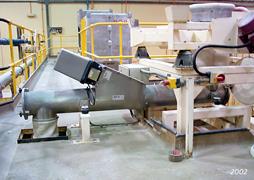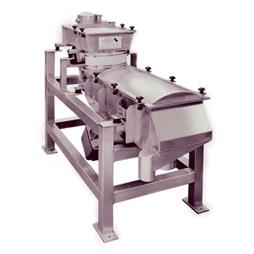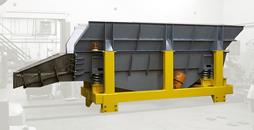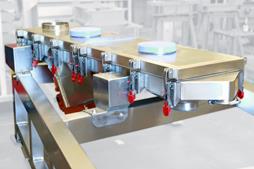Vibratory conveyor in a production line – design adjustability is key
29-05-2018
Every production line is different. Every factory has its quirks. Every area is bigger, smaller, thinner, wider. Every material handles in a different way and every process requires a different specification. Every production also has to be practical, efficient and cost effective – no matter how awkward. Luckily, we have been dealing with awkward for 41 years – and I think it’s fair to say that we’re pretty good at it.
In order for equipment to not only suit a wide range of applications, but also suit the endless variations of lines, factories, plants and overall operations, the design and build of a vibrating conveyor, feeder, vibrating screen or any type of materials handling equipment cannot be a one-size-fits-all. It just doesn’t work. Unless, of course, you would like to lose out on one of the key requirements of practicality, efficiency or cost effectiveness.
We don’t think that you should have to.
Instead, we offer another answer - design adjustability.
Take, for example, a vibratory conveyor. Our conveyors have been used in pharmaceutical, heavy industry, recycling, glass manufacture, chemical production and food production applications. All with the same basic task of moving product from one place to another, but all conveying materials of a different size, weight and texture; to be used within different areas – inside, outside, small space, large; to different specifications – heavy duty, food safe, ATEX certified. The list only continues.
By offering design adjustability we can ensure that a solution is always the very best for the job. As such, a vibrating conveyor can be designed to fit the exact area in which they are needed to operate. They can be powered by a variety of drives, from 50hz units for heavy bulk materials, to 25hz for handling light, friable and flexible materials such as woodchip, rubber crumbs, food items etc.
Suitable for use beneath hoppers and bunkers, the conveyors can be either base mounted, suspended or simply used as transfer conveyors for a wide range of systems. A vibrating conveyor can facilitate infinitely variable delivery in a fraction of a second – high bulk density load capability and low power consumption.
Trough or tubular sections can be supplied to suit individual applications and can be manufactured in carbon steel, stainless steel, polypropylene or lined with a combination of these materials. For handling powders, which a vibratory conveyor is often chosen for, a flexible liner can be fitted to the trough which significantly improves the flow characteristics of powders.
Depending on the complexity of the application, there is a choice of control systems that offer varying degrees or sophistication. These range from basic, inexpensive units providing simple, on/off plus amplitude variation functions, to more sophisticated types operating with specialised interfaces which accept process analogue signal information.
With design adjustability you can ensure that the vibratory conveyor (or feeder, vibrating screen, table or any other materials handling equipment) doesn’t just ‘work’ within the production line, but is specifically suited to be the best solution for the application at hand. The equipment handles the awkward, so that you don’t have to.
If you would like to discuss any equipment that you think might help your production, please don’t hesitate to get in touch.





